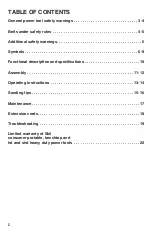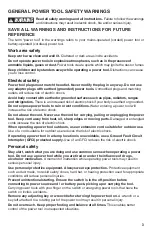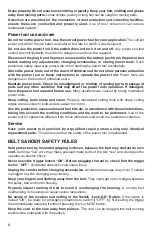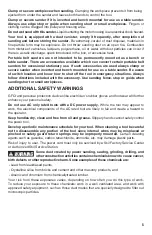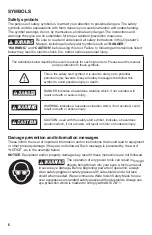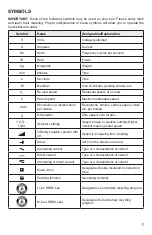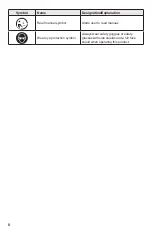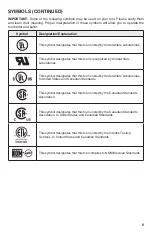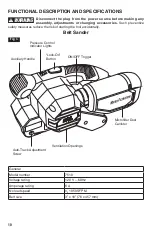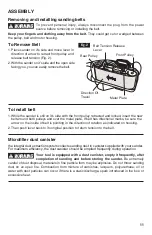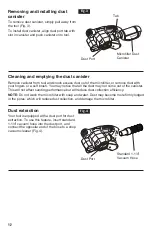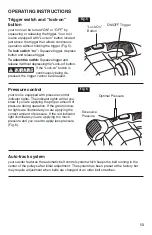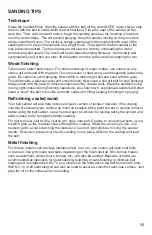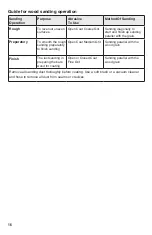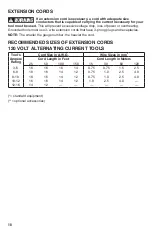
4
Dress properly . Do not wear loose clothing or jewelry . Keep your hair, clothing and gloves
away from moving parts .
Loose clothes, jewelry or long hair can be caught in moving parts.
If devices are provided for the connection of dust extraction and collection facilities,
ensure these are connected and properly used .
Use of dust collection can reduce
dustrelated hazards.
Power tool use and care
Do not force the power tool . Use the correct power tool for your application .
The correct
power tool will do the job better and safer at the rate for which it was designed.
Do not use the power tool if the switch does not turn it on and off .
Any power tool that
cannot be controlled with the switch is dangerous and must be repaired.
Disconnect the plug from the power source and/or the battery pack from the power tool
before making any adjustments, changing accessories, or storing power tools .
Such
preventive safety measures reduce the risk of starting the power tool accidentally.
Store idle power tools out of the reach of children and do not allow persons unfamiliar
with the power tool or these instructions to operate the power tool .
Power tools are
dangerous in the hands of untrained users.
Maintain power tools . Check for misalignment or binding of moving parts, breakage of
parts and any other condition that may affect the power tool’s operation . If damaged,
have the power tool repaired before use .
Many accidents are caused by poorly maintained
power tools.
Keep cutting tools sharp and clean .
Properly maintained cutting tools with sharp cutting
edges are less likely to bind and are easier to control.
Use the power tool, accessories and tool bits etc . in accordance with these instructions,
taking into account the working conditions and the work to be performed .
Use of the
power tool for operations different from those intended could result in a hazardous situation.
Service
Have your power tool serviced by a qualified repair person using only identical
replacement parts .
This will ensure that the safety of the power tool is maintained.
BELT SANDER SAFETY RULES
Hold power tool by insulated gripping surfaces, because the belt may contact its own
cord .
Cutting a “live” wire may make exposed metal parts of the tool “live” and could give the
operator an electric shock.
Never leave the trigger locked “ON” . Before plugging the tool in, check that the trigger
lock is “OFF” .
Accidental start-ups could cause injury.
Unplug the sander before changing accessories .
Accidental start-ups may occur if sander
is plugged in while changing an accessory.
Keep your fingers and clothing away from the belt.
They could get cut or wedged between
the pulley, belt and motor housing.
Properly adjust tracking of belt to avoid it overhanging the housing .
A running belt
overhanging its housing can cause severe lacerations.
Be aware of the location and setting of the Switch “Lock-ON” Button .
If the switch is
locked “ON”, be ready for emergency situations to switch it “OFF”, by first pulling the trigger
then immediately releasing it without pressing the “Lock-ON” button.
Keep the cord to the side away from pulleys .
The cord can be dragged into belt housing
and become entangled with the pulleys.


